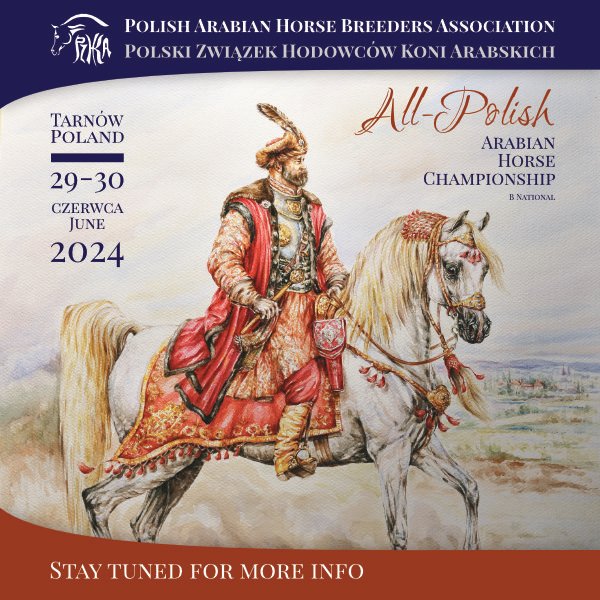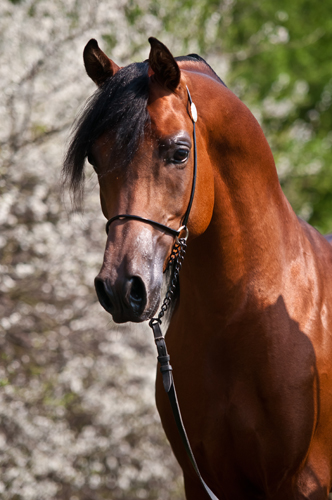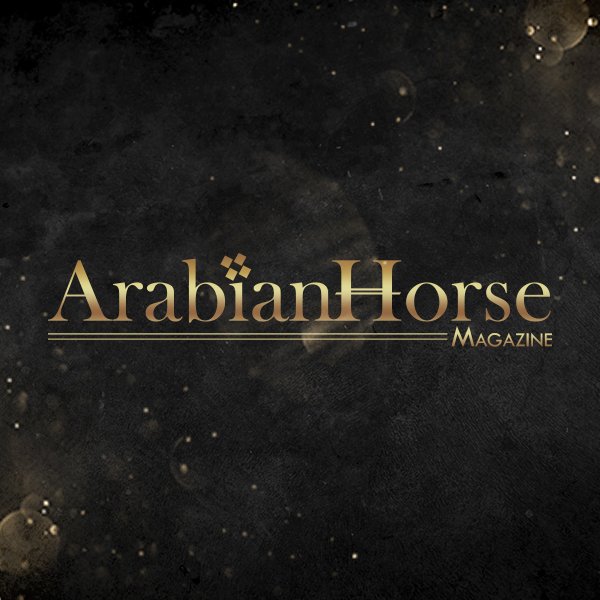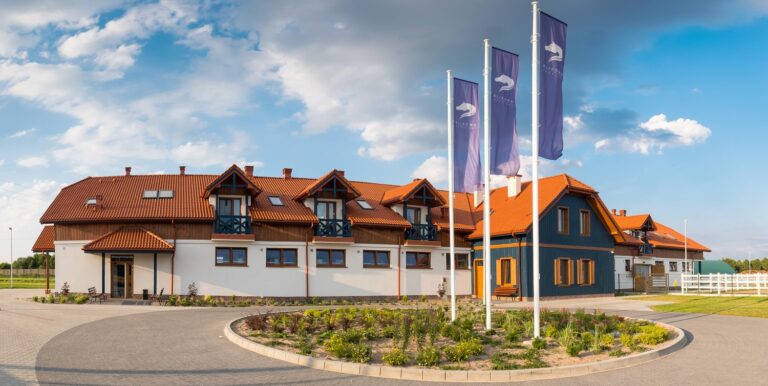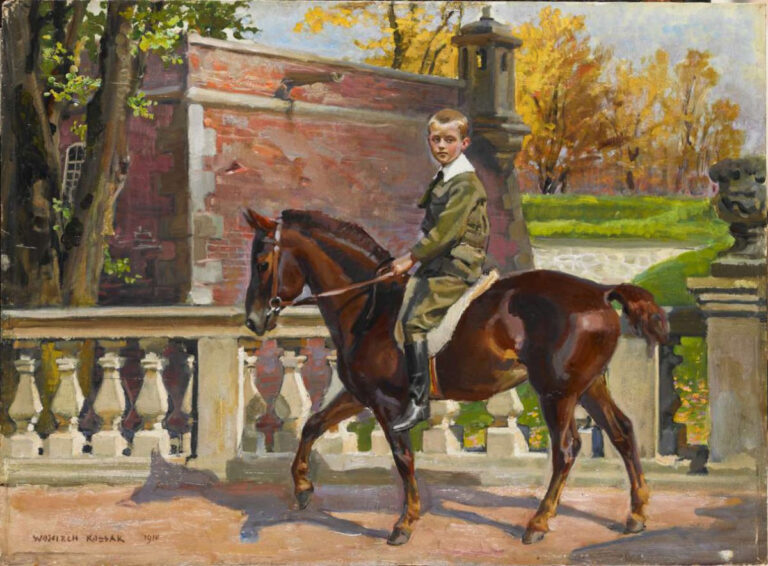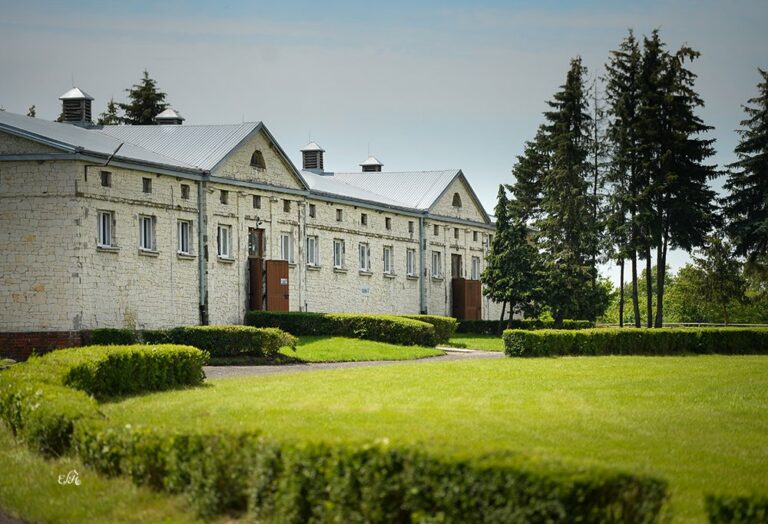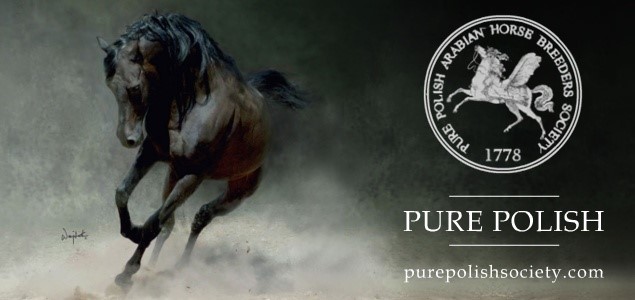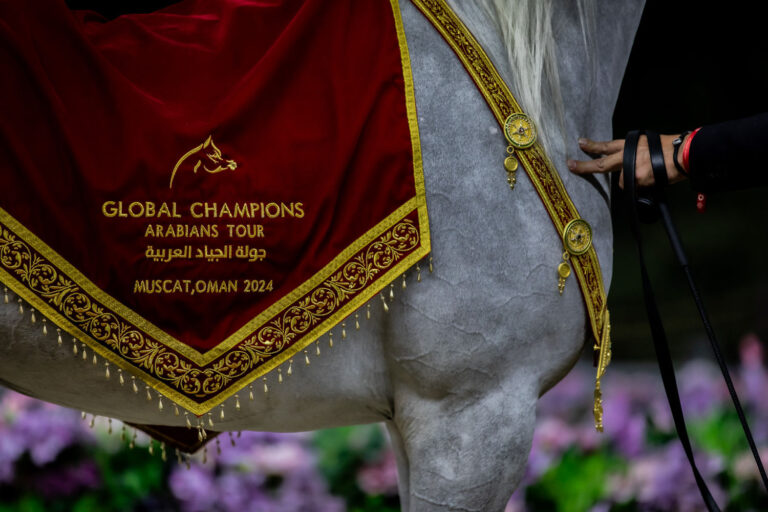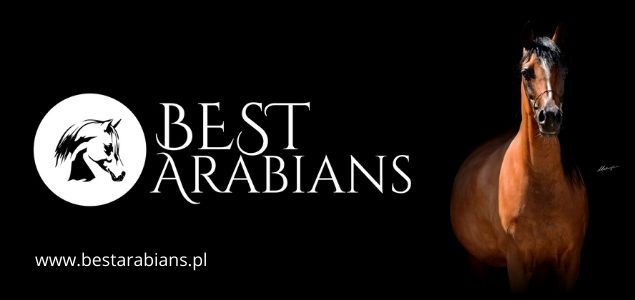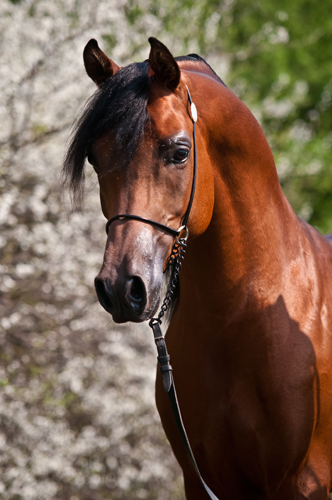
Today a 4 year old stallion, MARAN (FS Bengali – Missouri/Wachlarz), bred and owned by Tarnawka Stud (Poland), medallist from Tulip Cup and Poland, had won his age groups three years in a row – as a yearling and a two year old at the Junior Spring Show in Białka, whereas at the 1st Polska-Arabia Horse Festival in Warsaw he not only won his class as a three-year-old, but also brought home the title of Junior Champion. Upon his debut in Białka in 2010 he gained the exact same total score (41,33) as Janów’s brightest star of today, the stallion Pogrom (QR Marc – Pętla/Visbaden). Noticeable is his beautifully arched neck and horizontal topline, inherited from his dam Missouri b. 2002 (Wachlarz – Mina by Monogramm), bred by M.&J. Pietrzak, who was chosen Junior Champion Mare of the 3rd Summer Show in Warsaw of 2003 (Poland). Maran has already sired some very promising foals, whereas his breeder and owner Czesław Witko – in accordance with Polish tradition – plans to test his stamina in endurance races. All those facts indicate that the sire line, whose founder was imported from the desert long ago as one of the first desert-breds, is doing quite well in Poland and all over the world!
Bairactar and Emir Rzewuski
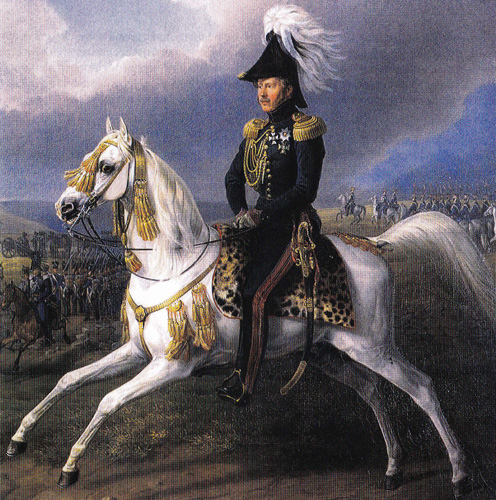
The stallion Bairactar DB was imported from the Middle East in 1817, to the German stud in Weil, on a special request of Queen Catherine of Württemberg, sister to the Russian Tsar Alexander I. That stallion was the founder of the oldest sire line used later in Poland, although in Polish breeding itself he appeared relatively late. There were, however, some Polish accents bound with his import, because at the same time another lot of horses was brought from the desert by the Emir Rzewuski.
Until the first half of 20th century the sire line was prolonged mainly at Weil, where a kind of specific tradition was created – its male continuers were given the names of Tajar or Amurath, in turns. The most valuable proved the stallion Amurath gr. 1881 (Tajar – Koheil III), nicknamed “Amurath of Weil”. His get included two precious sires: Selim 1896 (out of Selma) – the sire of Nana Sahib I (whose daughter was the first Polish Derby and Oaks winner, Sahiba 1924) and Amurath II b. (out of Fatme DB), born in 1907 at Radautz. Here is where the Polish part begins, because Amurath II was used in a private and small yet very renowned stud at Breniów in independent Poland. Sahiba, related to Amurath II through Amurath of Weil, was bred to him and what resulted from this combination was an epoch-making stallion, the grey Amurath Sahib, foaled in 1932. “It would be difficult to imagine breeding without this stallion – and not just Polish breeding”, wrote Roman Pankiewicz in his book titles “Polish Arabian horse breeding 1918–1939”.
Amurath Sahib’s legacy
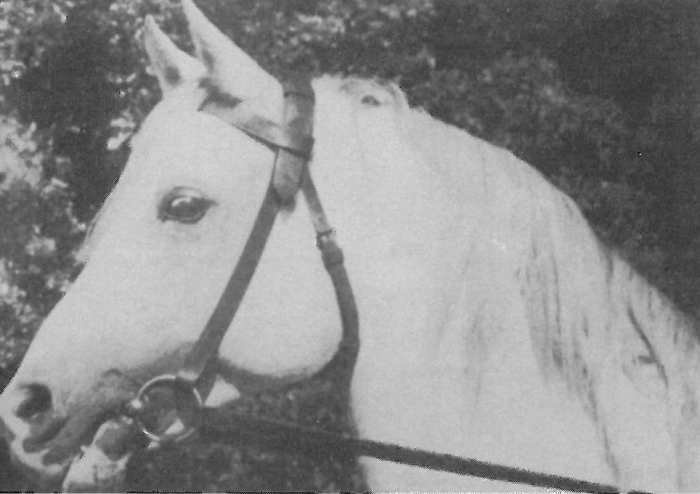
Amurath Sahib was both “bold and beautiful” – two traits required from a Polish Arabian. His race career lasted two seasons, with 24 starts and 7 wins. He placed 4th in his age group at the track, with a use value index of 3,37-1,6,II, indicating not only good performance, but also stamina. He was a sizeable horse, with a long neck and level topline, which he passed on to his get. In 1937 he was purchased by the State Stallion Depot at Janów Podlaski and his stamina helped him to survive the evacuation of the Janów horses to Germany, as the mount of none other than Director Andrzej Krzyształowicz himself. He later returned to Janów together with other Janów horses, where he joined the newly established State Stud at Klemensów in 1947.
During World War II Amurath Sahib served mares at private studs and sired such precious daughters as Amneris 1940 (dam of Aquinor) or Bałałajka 1941 (dam of Bandola and Bask). He stood at Klemensów until 1952. In total he sired 49 heads of progeny, including 3 stallions and 16 mares used in post-war Polish breeding. Many of them inherited his racing talents – Adis Abeba ch. 1947 (out of Ofirka) won the Oaks (Coefficient of success 1,49), Estokada ch. 1951 (out of Saga) – the Oaks and Criterium (Cs 4,44), whereas Equifor b. 1951 (out of Forta) – the Derby (Cs 4,28).
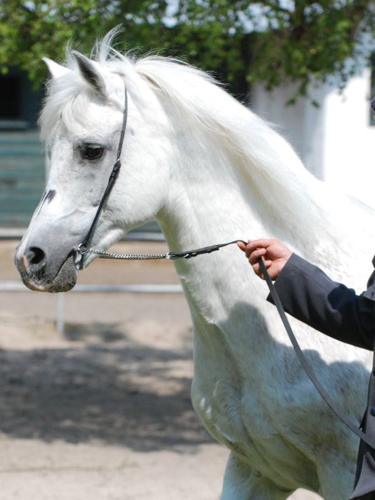
The last son of Amurath Sahib used in Poland was Gwarny gr. 1953 (out of Gwara), a poor racer (Cs 0,49), but the longest serving chief sire (standing at stud for about 20 years). He left behind 78 heads of progeny, including one Derby and Criterium St. winner (Badi Szach, gr. 1959, out of Badiara, Cs 3,47). Six of his sons were tested in Polish breeding. Two of them, Gedymin gr. 1968 (out of Gastronomia) and Argo gr. 1976 (out of Arba), gave successors – Woroblin b. 1977 (out of Warmia) and Falsyfikat gr. 1984 (out of Fantastka), respectively. Woroblin was assigned to the newly established stud at Białka, whereas Falsyfikat was used at Michałów, but none of them prolonged their “branches”. The most promising seemed Balon gr. 1979 (out of Ballada), a grandson of the “living legend” Bandola, inheriting after her a beautiful head and longevity, but he, in turn, passed on rather endurance abilities, similarly to his son Kulig gr. 1991 (out of Kawalkada).
The versatile Arax
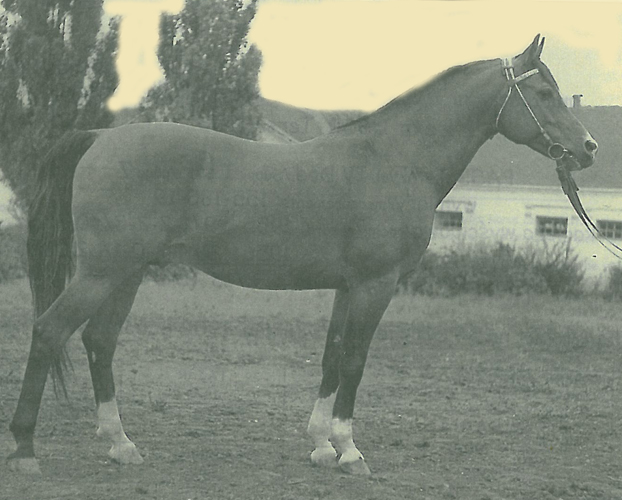
A much stronger and easier to prolong sub-line was that tracing back to Arax b. 1952 (out of Angara), Cs 2,09. He was sparsely used in Poland, because he caught the interest of Soviet breeders from Tersk. In Poland he left behind only two valuable broodmares (Rokitka and Złota Iwa), whereas Boltonka was quite successful in the US. On the other hand, Tersk mares suited him well and he gained great popularity as a sire. He established a “dynasty” with many generations of representatives all over the world, often distinguishing themselves with great versatility, meeting both show and performance demands. For the time being, this is the most numerous branch of the Bairactar sire line.
The Arax son Nabeg b. 1966 (out of Nomenklatura – a daughter of Naseem by Skowronek and Mammona robbed from Janów Podlaski in 1939) was a very versatile sire. Among 39 heads of his progeny we find US National Champion Pesniar b. 1975 (out of Pesnia), Menes b. 1977 (out of Metropolia) – a father to valuable sires Balaton ch. 1982 (out of Panagia) and Vympel b. 1983 (out of Molva); or the used in Poland Tallin b. 1978 (out of Talantlivaya).
Tallin was an especially good match for mares from the Szweykowska family. Out of such dams he produced two valuable leading sires – Wojsław b. 1986 (out of Wilejka) and Wagram b. 1988 (out of Wendeta). Wojsław, like his grandfather, proved to be a very versatile sire. He was able to sire outstanding progeny with regard to quite extreme traits. For example the crop of 1993 included two of his sons: Emanor gr. (out of Emanacja) – 1998 Polish National Senior Champion and Best in Show, Canadian National Reserve Champion and Scottsdale Champion Stallion, as well as Druid, bay (out of Dalida) – an 11 times winner from 12 starts, including all possible classic races, with a record-setting coefficient of success 20,60. Deserving a separate mention is Werbum 1995 (out of Werda/Piechur), a sire of many remarkable mares in Polish breeding. Representing his sire to this day in Scandinavia is Beduin 2000 (out of Bogdanka/Europejczyk),
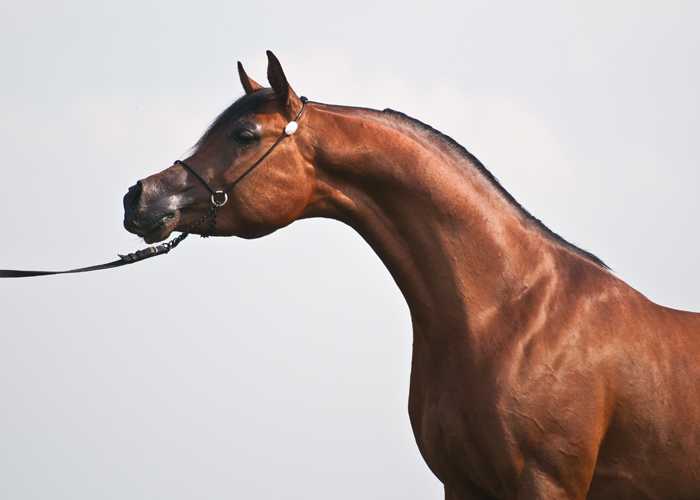
a highly decorated equine from European arenas.In Poland Wagram was used only in private breeding. After being exported to Argentina, he became renown as a sire of outstanding endurance horses.
The most highly esteemed representatives of the Arax sub-line west of our border proved Balaton and his son Kubinec ch. (out of Kosmetika), slightly inbred to Arax. Kubinec won the titles of German National Champion, European Champion and World Champion, with his bloodline making its way to Poland through his three sons.
Kubinec’s three sons in Polish breeding
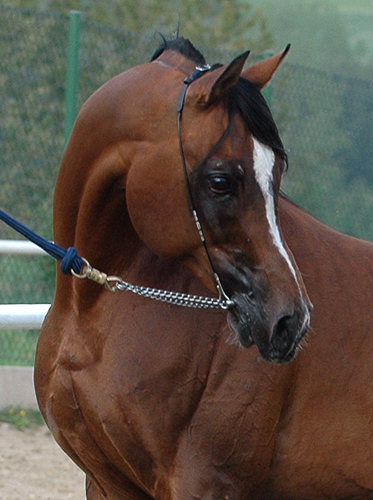
The first of them, FS Bengali b. 1994 (out of Om El Sanadiva by Sanadik El Shaklan), born in Germany, won the National Championship in that country and later the World Junior Reserve Championship, Scottsdale and US National Championship. In Poland he was used from 2007 to 2009, mostly at Tarnawka Stud. His best son proved to be Maran. “When purchasing FS Bengali”, says Maran’s breeder, Czesław Witko, “I analyzed the successes of his get, especially those from Aja Arabians: Aja Sangali and Aja Sanagor. I used him on a wide scale at my stud. With time it turned out that he was best suited with the mare Missouri. Maran is
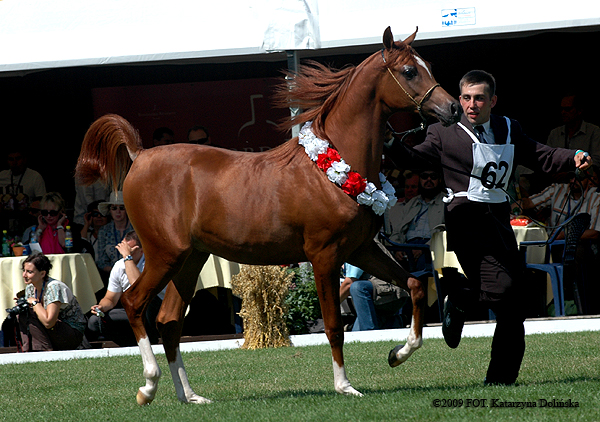
definitely growing better with each year”. From FS Bengali offspring in Poland distinguished also Eternal 2008 (out of Ewitacja/Ganges), br/o. By Mała Wieś Stud. As a yearling he won the title of Res. Champion Colt twice, at the Junior Spring Show in Białka and Polish Nationals in Janów. A year later he was the bronze medalist of the Scandinavian Open Championships in Blommeröd. He spent the 2012 season as chief sire in Nordlys Araber (Norway).
Second of the Kubinec sons, El Nabila B gr. 1996 (out of Elf Layla Walayla B), bred at Babolna, was represented in Poland only through his semen. Promising progeny by him was born at Janów and Michałów, for example the stallion Almanzor gr. 2009 (out of Alantina).
The third of Kubinec’s sons utilized in Polish breeding, Setnik ch. 2001 (out of Sieć), bred at Tarus Arabians and used there, left some descendants in private breeding.
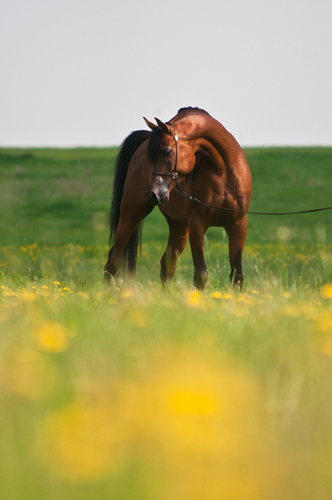
This shows that there is no reason to worry about the continuation of Bairactar’s sire line in Poland, especially the line established by the stallion Arax. Maran is just beginning his breeding career, but it is already evident that he is a sire that strongly stamps his get. Czesław Witko emphasizes, that Maran passes on a beautiful front end, a fantastic setting of the neck and a proud posture. “He has definitely improved those mares that we selected for him”, says the breeder. “First and foremost he gives a beautiful eye. Maran’s foals caught the attention of a Moroccan breeder. Six of them will soon reinforce the breeding in that country.”
Download the PDF version of the article»


